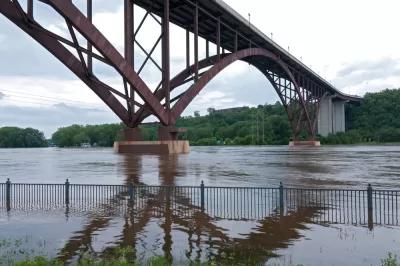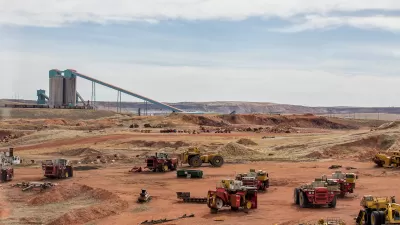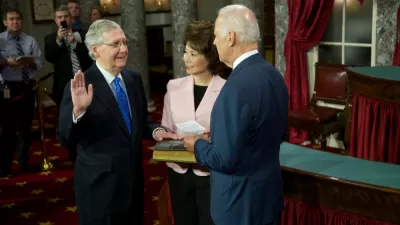The U.S. Department of Transportation is following through President Trump's promises to ease the federal government's permitting and approvals processes for infrastructure projects.

Sam Mintz reports that the U.S. Department of Transportation is publishing two new interim policies on environmental reviews for infrastructure projects.
"The first [pdf] says sub-agencies should limit the text of draft and final environmental impact statements to 150 pages, unless they're 'of an unusual scope or complexity.' It also recommends environmental assessments not be more than 75 pages," according to Mintz.
"The second [pdf] policy gives guidance on implementing President Donald Trump's One Federal Decision executive order, which mandates that major projects have one lead federal agency guiding the environmental review and authorization process," adds Mintz.
The interim policies follow up on a promise made by President Trump during his first State of the Union Address in January 2018. All of the Trump administration's cabinet secretaries signed a pledge in April 2018 to speed up permitting, including Secretary Elaine Chao at the U.S. Department of Transportation.
FULL STORY: DOT gives environmental reviews a page limit

Planetizen Federal Action Tracker
A weekly monitor of how Trump’s orders and actions are impacting planners and planning in America.

Maui's Vacation Rental Debate Turns Ugly
Verbal attacks, misinformation campaigns and fistfights plague a high-stakes debate to convert thousands of vacation rentals into long-term housing.

San Francisco Suspends Traffic Calming Amidst Record Deaths
Citing “a challenging fiscal landscape,” the city will cease the program on the heels of 42 traffic deaths, including 24 pedestrians.

Amtrak Rolls Out New Orleans to Alabama “Mardi Gras” Train
The new service will operate morning and evening departures between Mobile and New Orleans.

The Subversive Car-Free Guide to Trump's Great American Road Trip
Car-free ways to access Chicagoland’s best tourist attractions.

San Antonio and Austin are Fusing Into one Massive Megaregion
The region spanning the two central Texas cities is growing fast, posing challenges for local infrastructure and water supplies.
Urban Design for Planners 1: Software Tools
This six-course series explores essential urban design concepts using open source software and equips planners with the tools they need to participate fully in the urban design process.
Planning for Universal Design
Learn the tools for implementing Universal Design in planning regulations.
Heyer Gruel & Associates PA
JM Goldson LLC
Custer County Colorado
City of Camden Redevelopment Agency
City of Astoria
Transportation Research & Education Center (TREC) at Portland State University
Jefferson Parish Government
Camden Redevelopment Agency
City of Claremont





























